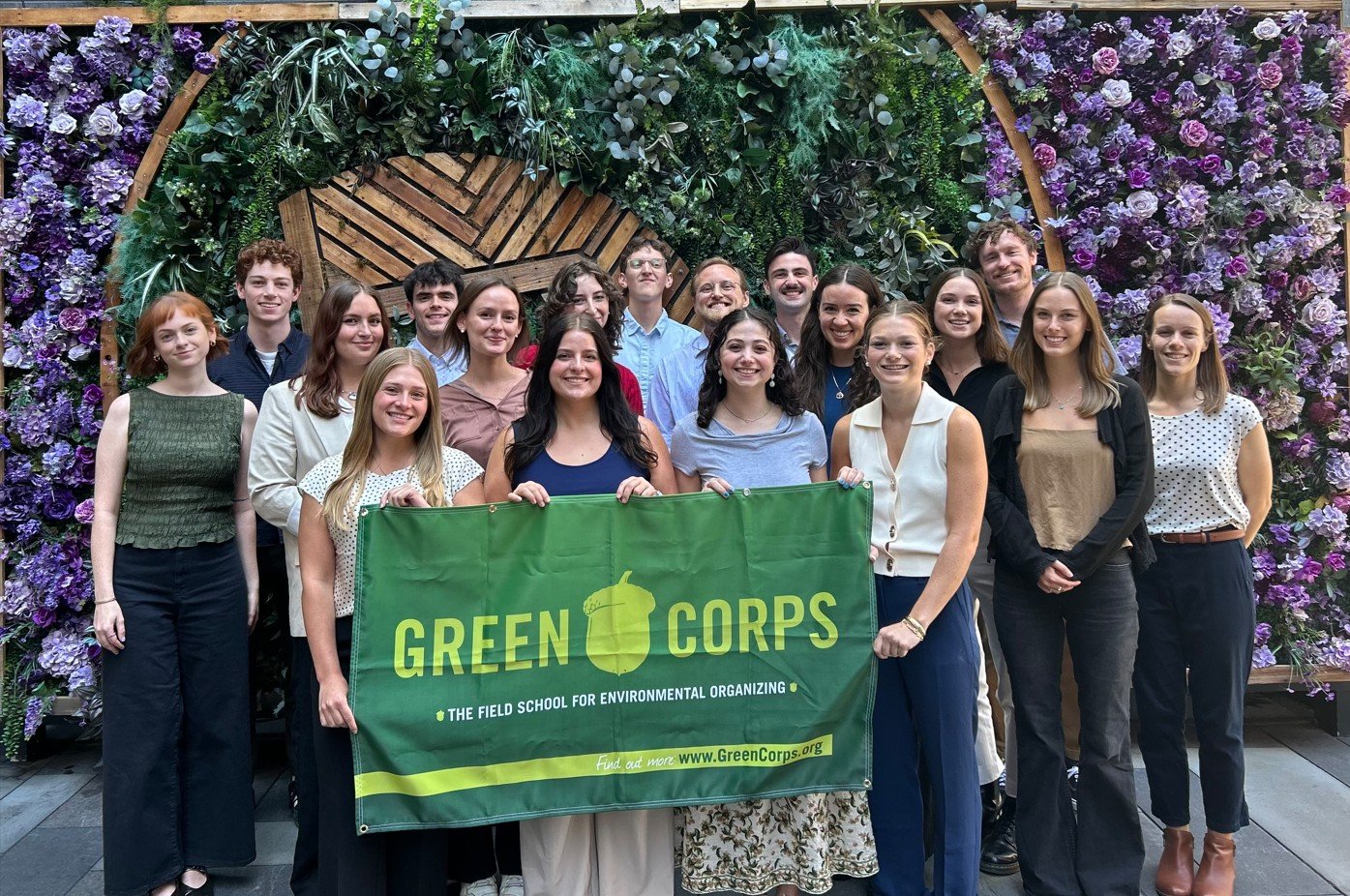Launching the Green Corps Class of 2026!
Our organizers in Green Corps Class of 2026 are launching their first campaigns! We just wrapped our introductory classroom training in Denver at the end of August.
During classroom training, organizers learned how to plan campaigns, work with the media, recruit and train volunteers and more. They also learned more about current environmental issues and campaigns, including wildlife corridors to protect endangered species, ocean conservation, reducing electronic waste, and clean energy.
Organizers immediately put their skills into practice on two ongoing campaigns in Colorado. On Environment Colorado’s Save the Bees campaign, they collected petition signatures, reached out to local businesses, and worked with the media. After helping reduce sales of toxic pesticides in 2023, this year’s team built public support to stop the use of neonicotinoid-coated seeds. They capped off training by delivering signatures to Governor Polis and speaking at a press conference.
They also worked on CoPIRG’s new Good Weather Forecasts Save Lives campaign. Colorado faces wildfires, floods, hailstorms, and other disasters that endanger lives and communities. We rely on early, accurate, and free weather alerts to keep people safe—from hikers avoiding avalanches to parents monitoring air quality and farmers planning crops. NOAA provides these forecasts and invests in the research and tools behind them, but cuts threaten its programs.
To raise awareness, organizers traveled across the state, from Pueblo to Fort Collins to Breckenridge. They educated Coloradans about NOAA’s work, encouraged residents to call on Secretary of Commerce Lutnick to protect NOAA’s programs and funding, spoke with more than 2,000 community members and business owners, published letters to the editor, and met with staff in four Congressional offices to share stories from constituents.
This week, organizers are launching their fall campaigns across the country. We’ll keep you posted on their work to protect arctic wildlife, reduce the health impacts of plastic pollution, advance wildlife corridors, stop waste in the textile industry, and restore Midwestern wetlands.


